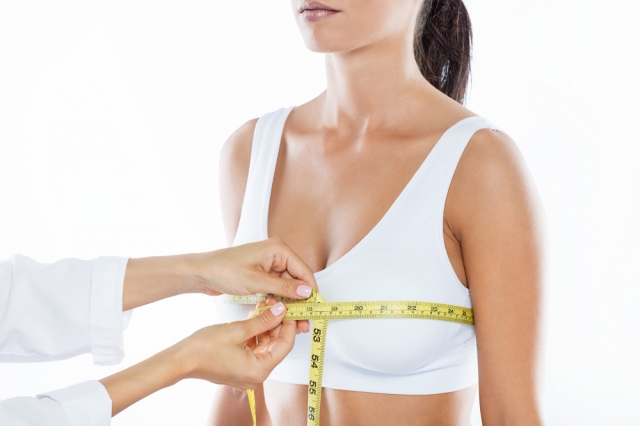When you're considering breast fat transfer, it's vital to navigate the process with informed choices and realistic expectations.
You'll want to start by selecting a top female plastic surgeon who understands your goals.
Preparing your body and mindset plays a significant role, too.
Each step, from the initial consultation to post-operative care, can impact your results.
Are you aware of the key factors that can influence your experience and outcome?
Let's explore some essential tips that could help you achieve a successful and satisfying transformation.
Key Takeaways
-
Choose a board-certified plastic surgeon with specific experience in breast fat transfers to ensure safety and optimal results.
-
Maintain realistic expectations about results, understanding that some fat may be reabsorbed affecting final appearance.
-
Follow post-operative care instructions diligently, including rest, hydration, and attending all follow-up appointments for successful recovery.
-
Discuss breastfeeding plans with your surgeon to ensure it is safe and feasible after the procedure.
-
Prioritize a healthy lifestyle with a nutrient-rich diet and emotional support to enhance recovery and well-being.
Choosing the Right Plastic Surgeon
When choosing a plastic surgeon for your breast fat transfer, make sure to select a board-certified professional with extensive experience in fat transfer procedures.
Verify their affiliation with the American Society of Plastic Surgeons (ASPS) and confirm they graduated from a recognized medical school.
Take the time to review patient testimonials and look at before-and-after photos to assess their skill and aesthetic style.
It's essential to find a surgeon who understands your goals and can provide a personalized approach.
Don't hesitate to ask about their specific experience with breast fat transfers.
Ensuring that your surgeon meets these criteria can greatly impact your results and overall satisfaction with the procedure.
Understanding Breast Fat Transfer
After finding the right plastic surgeon, it's important to understand what breast fat transfer involves and how it can enhance your body.
This procedure transfers fat from other areas of your body to your breasts, utilizing liposuction to harvest the fat.
It's an ideal option if you're seeking subtle breast enhancement while improving your overall body contour.
The process allows for natural breast volume and shape, making it a great choice for those who prefer a more organic look.
However, keep in mind that results can vary based on your individual anatomy and the amount of available fat for harvesting.
Understanding these aspects will help you make an informed decision about your breast fat transfer journey.
Benefits and Natural Look
Breast fat transfer offers natural-looking results that enhance your silhouette while minimizing the risks associated with implants. This procedure not only boosts your breast volume but also contours other areas of your body, giving you a dual benefit.
With fat cells integrating into the surrounding tissue, the results look and feel organic, providing a softness that implants often lack. Plus, the small incision technique means minimal scarring.
You'll also experience a lower risk of complications compared to silicone implants, making it a safer choice. Many patients appreciate the long-lasting results that come from using their body's fat, ensuring a more harmonious and natural appearance.
Ultimately, you'll enjoy a subtle enhancement that blends seamlessly with your body.
Ideal Candidates
Ideal candidates for breast fat transfer typically have sufficient body fat to harvest and desire a modest increase in breast size.
If you're healthy and don't have severe medical conditions, you might be a good fit.
It's also important that you don't experience significant breast sagging, as this procedure is best suited for those looking for subtle enhancement rather than major changes.
Non-smokers or individuals willing to quit smoking prior to surgery are preferred, as smoking can hinder recovery and fat survival.
Finally, having realistic expectations about the results will help guarantee you're satisfied with your decision.
Discuss your goals with your surgeon to determine if this procedure aligns with your needs.
The Surgical Process
The surgical process for breast fat transfer involves careful planning and execution to secure ideal results.
You'll start by discussing anesthesia options with your surgeon, who may recommend local or general anesthesia based on your comfort level.
Next, fat is harvested through liposuction from designated areas of your body. Once the fat is extracted, it's purified to ensure only healthy fat cells are injected.
Your surgeon will then strategically inject the purified fat into your breasts, enhancing volume and shape.
The entire procedure typically takes between 1.5 to 3 hours, depending on the amount of fat being transferred and the complexity of your case.
Clear communication with your surgeon before and during surgery is essential for a successful outcome.
Scars and Recovery Time
After the surgical process, you'll notice that the technique used for fat injection results in minimal scarring. The small incisions made during the procedure are typically hidden and hardly visible.
Recovery time varies from person to person, but you can expect a minimum of one to two weeks to feel more like yourself. During this period, it's common to experience bruising and swelling, so don't be alarmed.
You'll want to take it easy and rest for at least fifteen days. Follow-up appointments with your surgeon are essential to monitor your progress and guarantee proper healing.
Listening to your body and adhering to your surgeon's advice will help you recover smoothly and achieve the best results.
Post-Operative Care
Following your breast fat transfer, it's essential to adhere to your surgeon's specific aftercare instructions to guarantee a smooth recovery.
Start by maintaining a healthy diet rich in nutrients to support healing and fat retention. Hydration plays an important role, so drink plenty of water.
Avoid smoking, as it can hinder your recovery process considerably.
Rest is critical; make sure you take time off work and avoid strenuous activities for at least two weeks.
Attend all follow-up appointments to monitor your progress and address any concerns.
If you notice unusual symptoms, don't hesitate to contact your surgeon.
Time Frame for Results
Understanding the time frame for results is key to managing your expectations after the breast fat transfer procedure.
You'll likely notice initial changes soon after surgery, but these results aren't final. It typically takes about five to six months for the full effects to settle in as your body heals and absorbs some of the transferred fat.
During this period, you may experience fluctuations in breast size and shape due to fat absorption and healing. Regular follow-ups with your surgeon will help assess your progress and address any concerns.
Potential Risks and Complications
While breast fat transfer is generally safe, being aware of potential risks and complications is vital for informed decision-making.
Common risks include infection and bleeding, which can occur post-surgery. You might also experience fat necrosis, leading to lumps or irregularities in the breast shape. Asymmetry can develop, affecting the overall appearance.
It's important to monitor your body for any unusual symptoms and report them promptly to your surgeon. Understanding these risks helps you prepare mentally and physically for the procedure.
By choosing a qualified and experienced surgeon, you can minimize complications and enhance your overall experience.
Always discuss your concerns and questions during your consultation to guarantee you have a clear understanding of the procedure and its risks.
Long-term Effects
The long-term effects of breast fat transfer are generally favorable, with no increased risk of breast cancer associated with the procedure.
Most patients experience a natural and lasting enhancement, as fat cells can integrate well into the breast tissue. However, some fat may be reabsorbed by your body over time, which could affect the final results.
Rarely, you might develop cysts or calcifications, but these are uncommon. It's important to stay vigilant and attend regular follow-ups with your surgeon to monitor any potential complications.
Breastfeeding After Surgery
Breastfeeding after surgery is typically safe, as the ducts remain intact, allowing for normal lactation.
If you're planning to breastfeed in the future, it's essential to discuss this with your surgeon before the procedure. Most women can successfully nurse without complications, and there've been no reported adverse effects on milk production.
However, individual anatomy can vary, so personalized advice is critical. It's best to wait until you're fully healed before attempting to breastfeed, which generally takes a few weeks.
Keeping a healthy lifestyle, including proper nutrition and hydration, can support lactation.
Always monitor how you and your baby are adjusting, and don't hesitate to reach out to a lactation consultant if you encounter any challenges.
Emotional and Psychological Impact
Many patients experience a boost in self-esteem and body image after undergoing breast fat transfer, leading to increased confidence in their daily lives.
You'll likely notice a shift in how you perceive yourself, enhancing your overall mental well-being.
It's essential to set realistic expectations about your results to guarantee satisfaction.
Remember, this procedure won't solve all personal issues but can positively impact your self-image.
Support from family and friends during recovery can also make a significant difference in your emotional journey.
For some, psychological assessments might help address deeper concerns and prepare you better for the changes ahead.
Embracing this journey with the right mindset can lead to lasting emotional benefits.
Comparing Fat Transfer to Implants
When considering breast enhancement options, it's important to weigh the differences between fat transfer and implants.
Fat transfer provides a more natural feel and appearance, using your own body fat to enhance breast volume. This method typically has a lower complication rate compared to implants, which can require future replacements or adjustments.
However, implants allow for more dramatic size increases, giving you a broader choice in volume. Keep in mind that fat transfer results can be more unpredictable, as not all injected fat may survive.
Ultimately, your decision should align with your aesthetic goals and comfort level. Consulting with a qualified plastic surgeon will help clarify which option best suits your needs.
Cost Considerations
Costs for breast fat transfer typically range from $3,050 to $8,000, influenced by factors like your specific goals and the surgeon's expertise.
The total price often includes both the liposuction and fat transfer procedures, so it's essential to confirm what's covered in the quote.
Geographic location can also impact pricing, as costs may vary considerably between cities and clinics.
When selecting a surgeon, consider their experience and reputation, as higher expertise may lead to higher fees but potentially better results.
It's a good idea to schedule a consultation to get an accurate estimate based on your individual needs.
Planning your finances ahead of time can help ease the burden of unexpected costs.
Alternatives to Fat Transfer
If you're considering breast enhancement but aren't sure about fat transfer, there are several effective alternatives worth exploring.
Breast implants are a traditional choice, offering various sizes and shapes for more dramatic enhancements.
Injectable fillers can provide temporary volume increases, allowing you to test your desired look without a long-term commitment.
Other body contouring procedures, like liposuction or tummy tucks, might also help create a more contoured appearance overall.
Non-surgical options, such as ultrasound or radiofrequency treatments, can enhance skin tightness and firmness without surgery.
It's essential to discuss all these options with your surgeon to find the best fit for your goals and expectations.
Each alternative has its pros and cons, so thorough research is critical.
Conclusion
In conclusion, when considering breast fat transfer, make informed choices by selecting a qualified surgeon like Dr. Rebecca Wyten and understanding the procedure.
Embrace the benefits of a natural look while keeping realistic expectations.
Remember to maintain a healthy lifestyle pre-surgery and prioritize post-operative care for the best results.
Whether you're exploring this option or comparing it to implants, being well-prepared will help you achieve your desired outcome and enhance your confidence.






